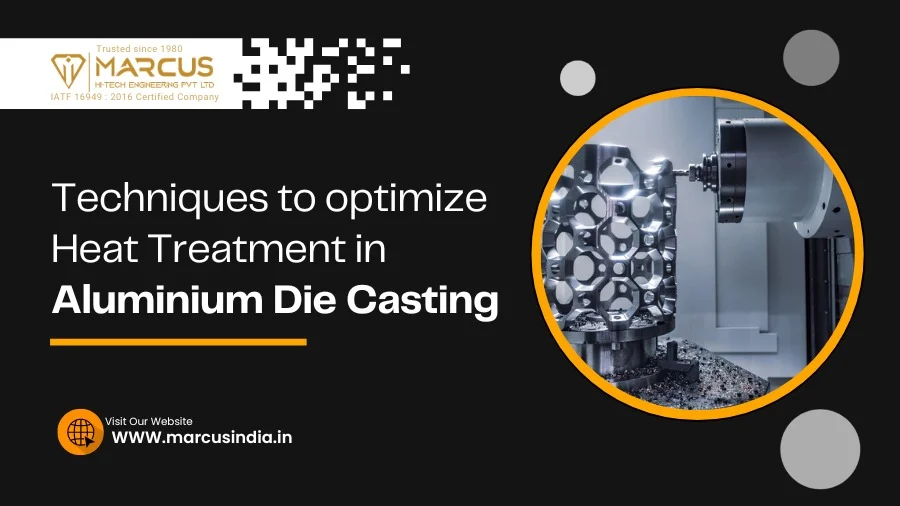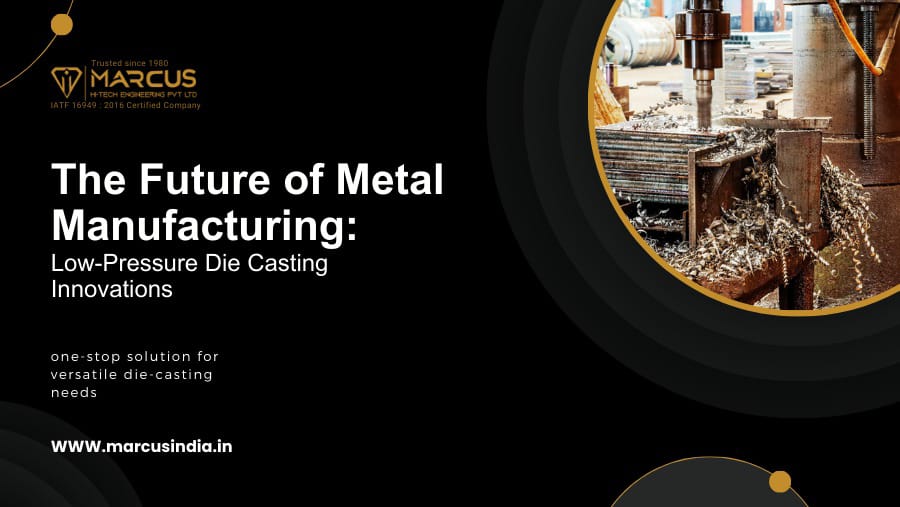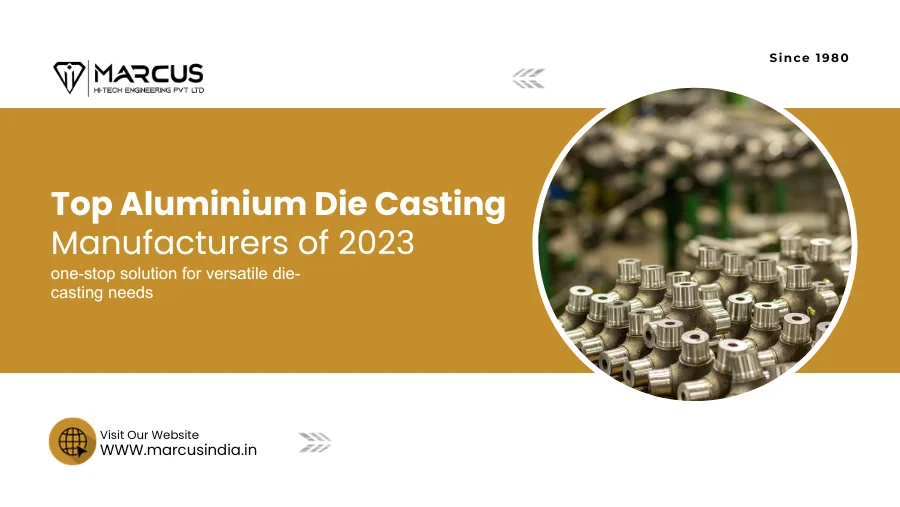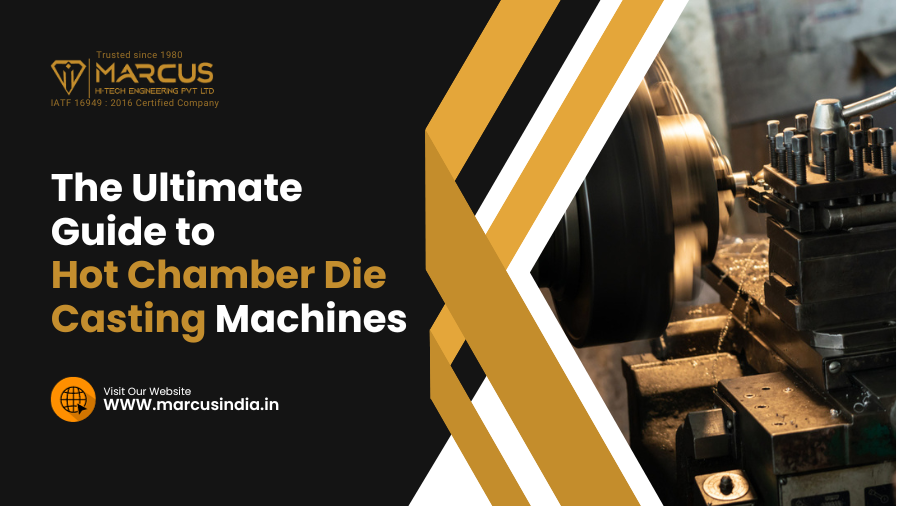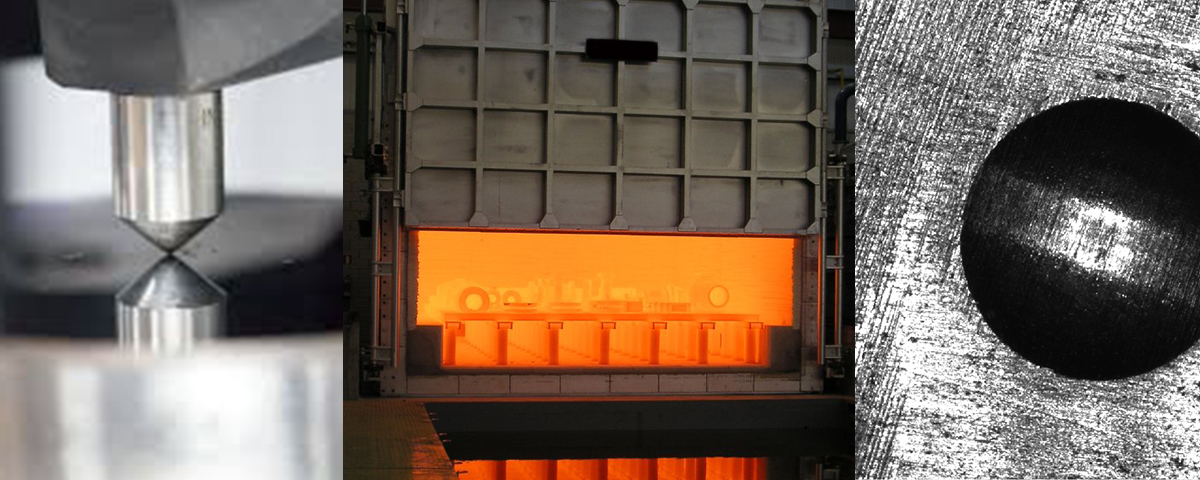
Aluminum die casting has firmly established itself as a cornerstone in modern manufacturing. Its ability to produce intricate designs with high precision makes it indispensable. However, the true potential of an aluminum die-cast component is realized post-casting during the heat treatment process. This article delves into the nuances of optimizing heat treatment in aluminum alloy die casting, ensuring parts that are not just precise but also robust and durable.
The Aluminium Advantage
With its lightweight nature and impressive strength-to-weight ratio, aluminum has become the metal of choice for numerous applications. Aluminum’s versatility is unmatched, from automotive components to intricate parts in electronic devices.
Critical Properties of Aluminium
- Lightweight: Aluminium is one-third steel’s weight, making it crucial for applications where weight reduction is vital.
- Corrosion Resistance: Aluminium forms a protective oxide layer, making it corrosion-resistant.
- Electrical Conductivity: It conducts electricity efficiently, making it essential for electronic and electrical applications.
- Thermal Conductivity: Aluminium’s ability to conduct heat makes it ideal for heat sinks and cooking utensils.
The Essence of Heat Treatment

Heat treatment is a controlled process to alter the microstructure of metals, including aluminum. Doing so makes it possible to enhance specific properties, making the metal more suitable for its intended application.
Objectives of Heat Treatment
- Hardening: Increasing the metal’s hardness, thereby improving its wear resistance.
- Softening: Reducing hardness to improve flexibility and aid in further processing like shaping or forming.
- Relieving Stresses: Eliminating internal stresses induced during casting or other manufacturing processes.
- Improving Toughness: Enhancing the metal’s ability to absorb energy and plastically deform without fracturing.
Techniques to Elevate Heat Treatment in Aluminium Die Casting
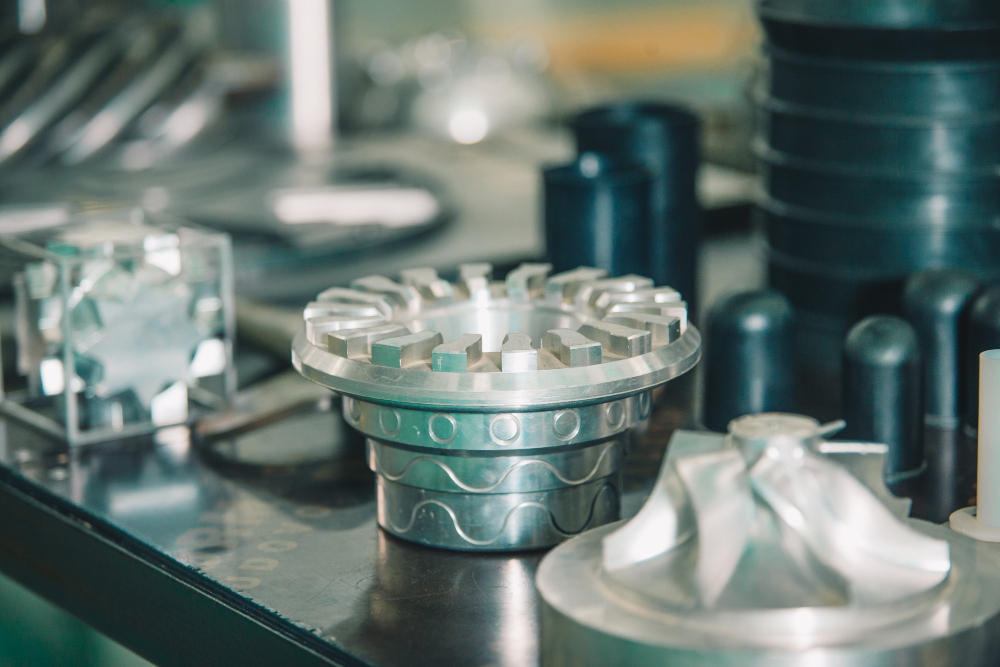
Controlled Heating
The rate at which aluminum is heated is crucial. Too rapid heating can lead to thermal stresses and potential warping or distortion. Advanced furnaces equipped with precise temperature controls are essential.
Holding Time Optimization
Once the desired temperature is reached, the aluminum component must be held at that temperature for a specific duration. This ‘soaking’ allows for uniform temperature distribution, ensuring consistent treatment.
Quenching Mastery
After heating, the aluminum component is rapidly cooled or ‘quenched.’ The quenching medium (water, oil, or air) and its temperature can influence the final properties of the component.
Aging to Perfection
Aging is when the aluminum component is heated to a lower temperature (than the primary heat treatment) and held for a specific duration. This results in the precipitation of microscopic particles within the aluminum, enhancing its mechanical properties.
Continuous Monitoring
Embedding sensors within furnaces can provide real-time temperature, holding time, and cooling rate data. When fed into advanced analytics systems, this data can offer insights and recommendations for optimization.
Challenges in Heat Treatment

While the benefits of heat treatment are numerous, the process isn’t without its challenges:
- Oxidation Risk: Aluminium, when exposed to high temperatures, can react with oxygen, leading to oxidation. This can affect the surface finish and properties of the component.
- Grain Growth: Prolonged exposure to high temperatures can lead to grain growth, which can reduce the mechanical properties of the aluminum.
- Residual Stresses: If not controlled, the heat treatment process can introduce residual stresses, leading to component warping or failure under certain conditions.
The Role of Technology
Modern technology plays a pivotal role in refining the heat treatment process. From AI-driven predictive analytics to IoT-enabled furnaces, the fusion of technology and traditional techniques is paving the way for unparalleled optimization.
Evolution of Heat Treatment
Understanding the historical evolution of heat treatment provides context to its modern applications. The process has its roots in ancient civilizations, where metals were heated and cooled to improve their properties.
Ancient Practices
Early blacksmiths discovered that heating iron and quenching it in water or oil would complicate it. This rudimentary form of heat treatment was the foundation for modern techniques.
The Industrial Revolution
The industrial era saw a surge in the demand for metals with specific properties. This led to scientific investigations into heat treatment, resulting in refined processes and better understanding.
Materials Science: The Backbone of Heat Treatment
At its core, heat treatment is a manifestation of materials science. By understanding the behavior of atoms and molecules in metals, we can predict and control the outcomes of heat treatment.
Crystal Structures:
Aluminum, like other metals, has a crystalline structure. The arrangement of atoms in these crystals determines many of the metal’s properties. Heat treatment can alter this arrangement, leading to changes in properties.
Defects and Dislocations:
Not all crystals are perfect. Defects and dislocations within the crystal structure can influence properties like strength and flexibility. Heat treatment can reduce or increase these defects depending on the desired outcome.
Modern-Day Applications of Aluminium Die Casting
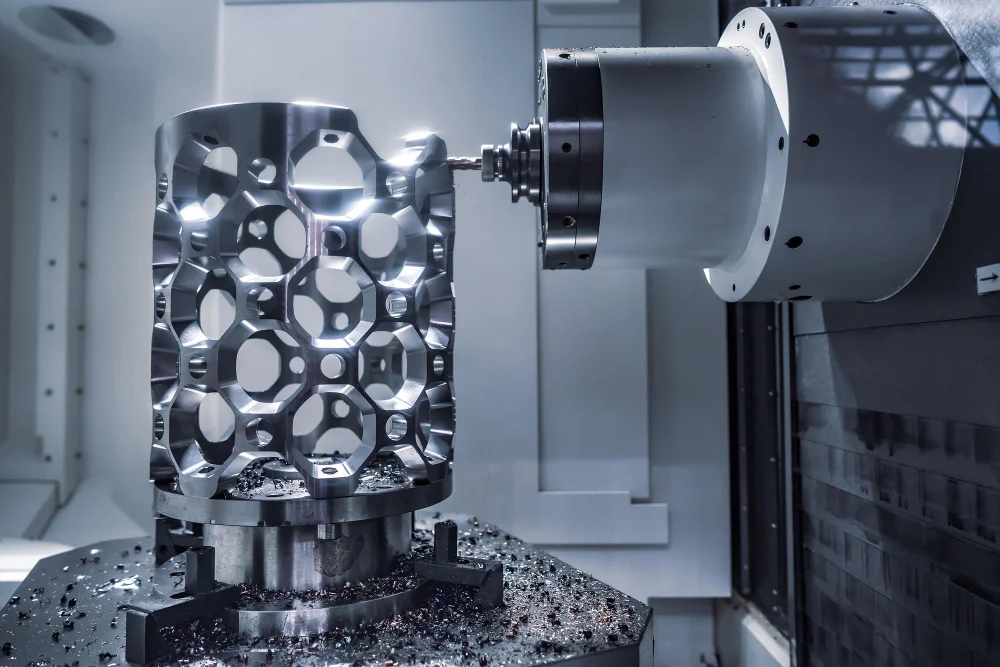
To truly appreciate the importance of optimized heat treatment, one must look at the myriad applications of aluminum die casting in today’s world.
Automotive Industry
Aluminum die-cast parts are ubiquitous in modern vehicles, from engine components to structural elements, are ubiquitous in modern vehicles. Optimized heat treatment ensures these parts can withstand the rigors of daily use.
Aerospace
The aerospace industry demands components with high strength-to-weight ratios. Aluminum die casting and precise heat treatment meet these stringent requirements.
Consumer Electronics
The sleek frames of smartphones, the casings of laptops, and other electronic components are often made from aluminum die-cast parts. Heat treatment ensures they are both durable and lightweight.
Challenges and Solutions in Modern Heat Treatment
While technology has advanced, challenges persist in the realm of heat treatment. However, with challenges come innovative solutions.
Challenge: Scale and Uniformity
Ensuring uniform heat treatment across large batches becomes challenging as production scales up.
Solution: Advanced furnaces with precise temperature zones and real-time monitoring ensure uniform treatment across large batches.
Challenge: Energy Consumption
Heat treatment, especially at industrial scales, consumes significant energy.
Solution: Energy-efficient furnaces, regenerative burners, and heat recovery systems make the process more sustainable.
The Role of Research and Development
The future of heat treatment lies in continuous research and development. Institutions and companies worldwide are investing in R&D to uncover the next breakthrough in heat treatment.
Nanotechnology
At the intersection of science and nanotechnology, researchers are exploring how manipulating materials at the nanoscale can influence heat treatment outcomes.
Simulation and Modeling:
Advanced computer simulations allow researchers to model heat treatment processes and predict outcomes, leading to more refined techniques.
The Science Behind Heat Treatment
To genuinely appreciate heat treatment techniques, one must first understand the science underpinning them. At its core, heat treatment is about manipulating the atomic structure of aluminum to achieve desired properties.
Phase Transformation
When aluminum is heated, it undergoes phase transformations. These transformations, when controlled, can lead to a refined grain structure, enhancing the metal’s mechanical properties.
Diffusion Process
Heat treatment also facilitates the diffusion of atoms within the metal. This movement of particles can lead to the elimination of defects and the formation of beneficial microscopic structures.
Advanced Techniques in Heat Treatment
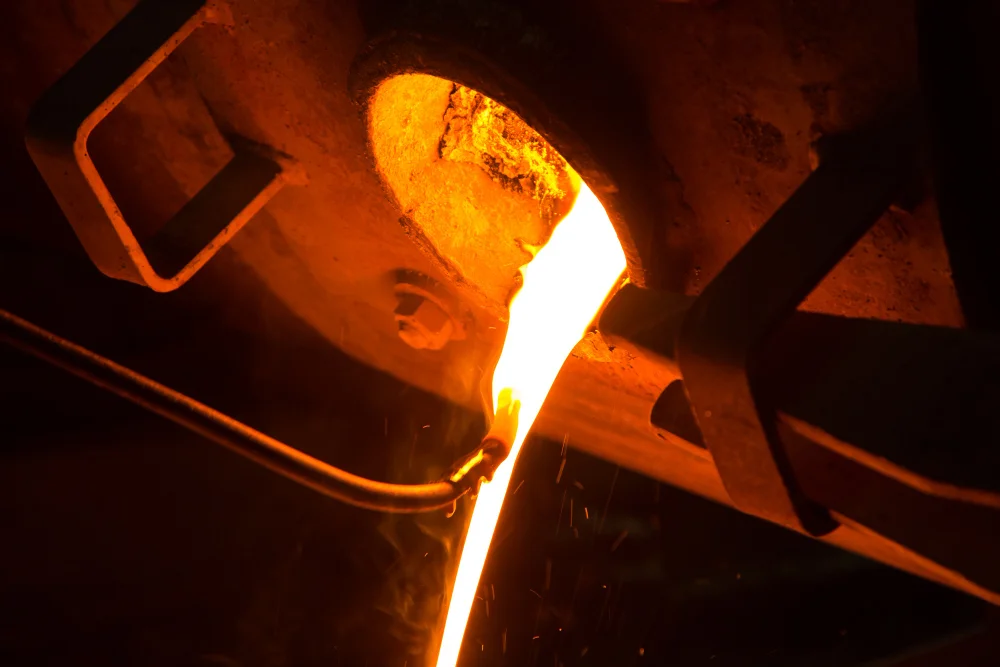
Isothermal Annealing: This involves heating the aluminum component to a specific temperature and allowing it to cool constantly. This technique is beneficial for relieving stress and improving flexibility.
Solution Heat Treatment: The aluminum is heated until its microstructures dissolve into a solid solution. It’s then rapidly cooled to ‘trap’ this solution, resulting in a homogenous structure. This is often followed by aging to achieve peak hardness.
Cryogenic Treatment: A relatively new technique involves cooling the aluminum component to extremely low temperatures, often liquid nitrogen. This can lead to the precipitation of fine particles within the metal, enhancing its wear resistance.
The Environmental Impact and Sustainability
In today’s world, sustainability is paramount. The heat treatment process, while essential, consumes significant energy. However, advancements in technology are paving the way for more energy-efficient operations.
- Regenerative Burners: These burners capture and reuse the heat from the furnace’s exhaust gases, reducing fuel consumption.
- Heat Recovery Systems: Modern furnaces are equipped with systems that recover heat from the cooling aluminum components and use it to preheat the incoming ones.
- Eco-friendly Quenching Mediums: Research is ongoing to find quenching mediums that are not only effective but also environmentally friendly.
The Road Ahead: Future Trends
The realm of heat treatment is ever-evolving. With the fusion of AI, machine learning, and traditional techniques, the future holds exciting possibilities:
- Predictive Maintenance: Using AI algorithms to predict when furnace components will fail, leading to reduced downtime.
- Personalized Heat Treatment: Customizing the heat treatment process for individual components based on real-time data.
- Integration with Industry 4.0: Seamless integration of the heat treatment process with other manufacturing processes, leading to enhanced efficiency.
- Integration with Industry 4.0: Seamless integration of the heat treatment process with other manufacturing processes, leading to enhanced efficiency.
Also Check: The Top 10 Die Casting Suppliers in India
Wrapping Up
From its historical origins to the present, the journey of heat treatment in aluminum die casting showcases the marvels of metallurgy and the relentless pursuit of perfection. Aluminium’s unique properties, enhanced through optimized heat treatment, have revolutionized the automotive and electronics industries.
The future of heat treatment is poised for even more significant achievements. Marcus, a beacon of expertise and innovation, is at the heart of this evolution. As the industry continues to evolve, the insights offered by Marcus remain invaluable for businesses aiming to harness the full potential of aluminum die casting. Despite challenges, innovative solutions, backed by technological advancements, are paving the way for more efficient and sustainable processes.
FAQs
The advantages of pressure die casting include:
- Precision: It allows for intricate and precise designs, producing complex parts with tight tolerances.
- Efficiency: High-speed production reduces manufacturing time and cost.
- Quality: Consistent, high-quality parts with minimal porosity and defects.
- Material Variety: Suitable for a wide range of metals and alloys.
- Sustainability: Minimal material waste and energy consumption make it environmentally friendly.
Pressure die casting typically uses non-ferrous metals such as aluminum, zinc, and magnesium. These alloys are chosen for their excellent flowability, heat resistance, and mechanical properties, making them ideal for precision casting in various industries. The specific metal used depends on the desired characteristics of the final product and the casting process requirements.
The types of casting defects include:
Porosity: This defect involves the presence of small voids or gas bubbles in the casting.
Shrinkage: Shrinkage defects occur when the casting material contracts as it cools, leading to voids or cavities.
Inclusions: Inclusions are foreign materials like sand or slag trapped in the casting during the pouring process.
Cold Shut: A cold shut occurs when molten metal flows together incompletely, resulting in a seam or line on the casting.
Misruns: Misruns happen when the molten metal doesn’t completely fill the mold, resulting in an incomplete casting.
Die casting typically involves the use of specialized equipment, including:
Die Casting Machine: This machine is the core of the process and is used to inject molten metal into a mold.
Mold (Die): The mold, often made of steel, defines the shape and design of the final product.
Furnace: To melt the metal, a furnace is used to heat it to the required temperature.
Ladle: A ladle is employed to transport molten metal from the furnace to the die casting machine.
Trimming Tools: After the part is cast, trimming tools are used to remove excess material and refine the final product.


